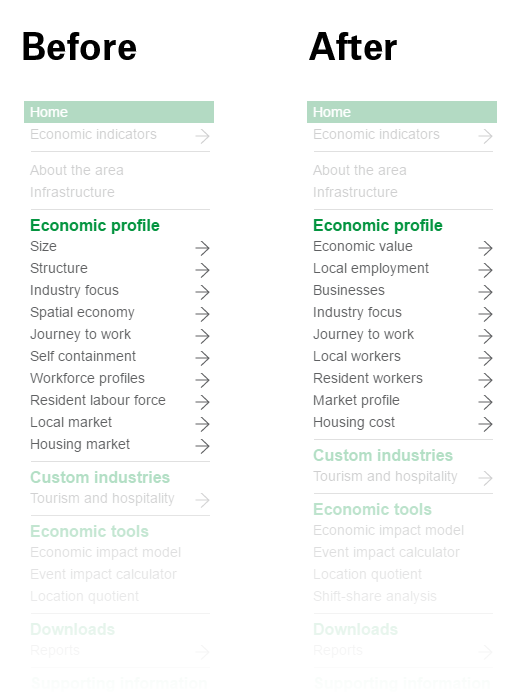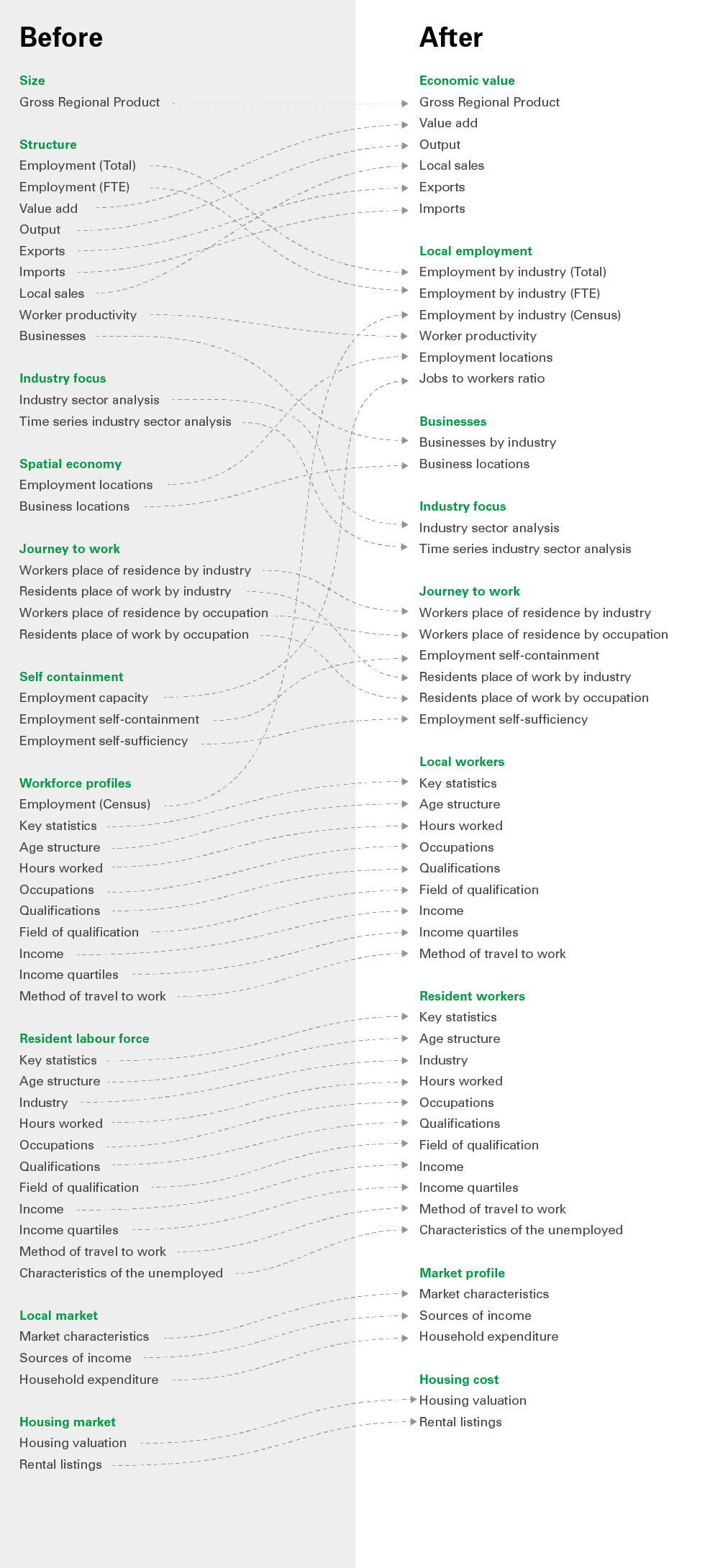Taking on board feedback from our customers, we’ve done some work on making economy.id easier for you to navigate and use. From today, you’ll notice some changes to the left-hand side menus designed to help you locate the information you need more easily. We’ve grouped similar topics together and also renamed some of the menu options with simpler terminology for you. These updates are designed to make it easier to use economy.id to profile your local economy.
The new menu structure mainly affects the Economic Profile section, where the bulk of the datasets are.

What’s new?
Similar topics are now grouped together in the Economic profile section:
- Economic Value includes information about the value and productivity of a local economy
- Businesses covers information about the location of businesses
- Local employment includes employment numbers and locations under one menu.
- Journey to work includes everything about where people live and where they work.
For those familiar with the old menu design, here’s a list of the main pages which have changed location or name:
- The old Size menu is now called Economic Value. Included under this menu option is data on Gross Regional Product, Value Add, Output, Local Sales, Exports and Imports (formerly in the Structure menu).
- Local employment is a new menu item covering all aspects of employment numbers in the area. This includes modelled Employment by Industry (Total) and Employment by Industry (FTE) (formerly under the Structure menu), Employment by Industry (Census) (formerly in the Worker profiles pages), Worker productivity (from Structure menu), and Employment Locations (formerly in Spatial Economy).
- Local employment also includes Jobs to workers ratio – a measure of how many jobs you have relative to local resident employed (moved from the Self-containment page).
- Journey to Work now includes Employment self-containment and Employment self-sufficiency.
- A new menu item Businesses contains ABS/ABR business register counts and maps of ABR data (formerly under Spatial economy).
New analysis tool
- Economic tools will include a new analysis feature called Shift-share analysis. We’ll provide more information on using this analysis tool shortly.
Name changes
- Workforce profiles are now named Local workers, showing people that work within the area, for local industries.
- Resident labour force profiles have been renamed Resident workers, denoting people that live in the area and are employed, either in local industries or outside the area.
Here’s a detailed diagram of all the changes to help you find your favourite pages.

If you have any queries or would like to request a training session on using .id’s economic profiles, please don’t hesitate to contact me.
.id is a team of demographers, urban economists, spatial planners and data experts who use a unique combination of online tools and consulting to help governments and organisations understand their local economies. Access our free economic resources to help profile your local economy.










